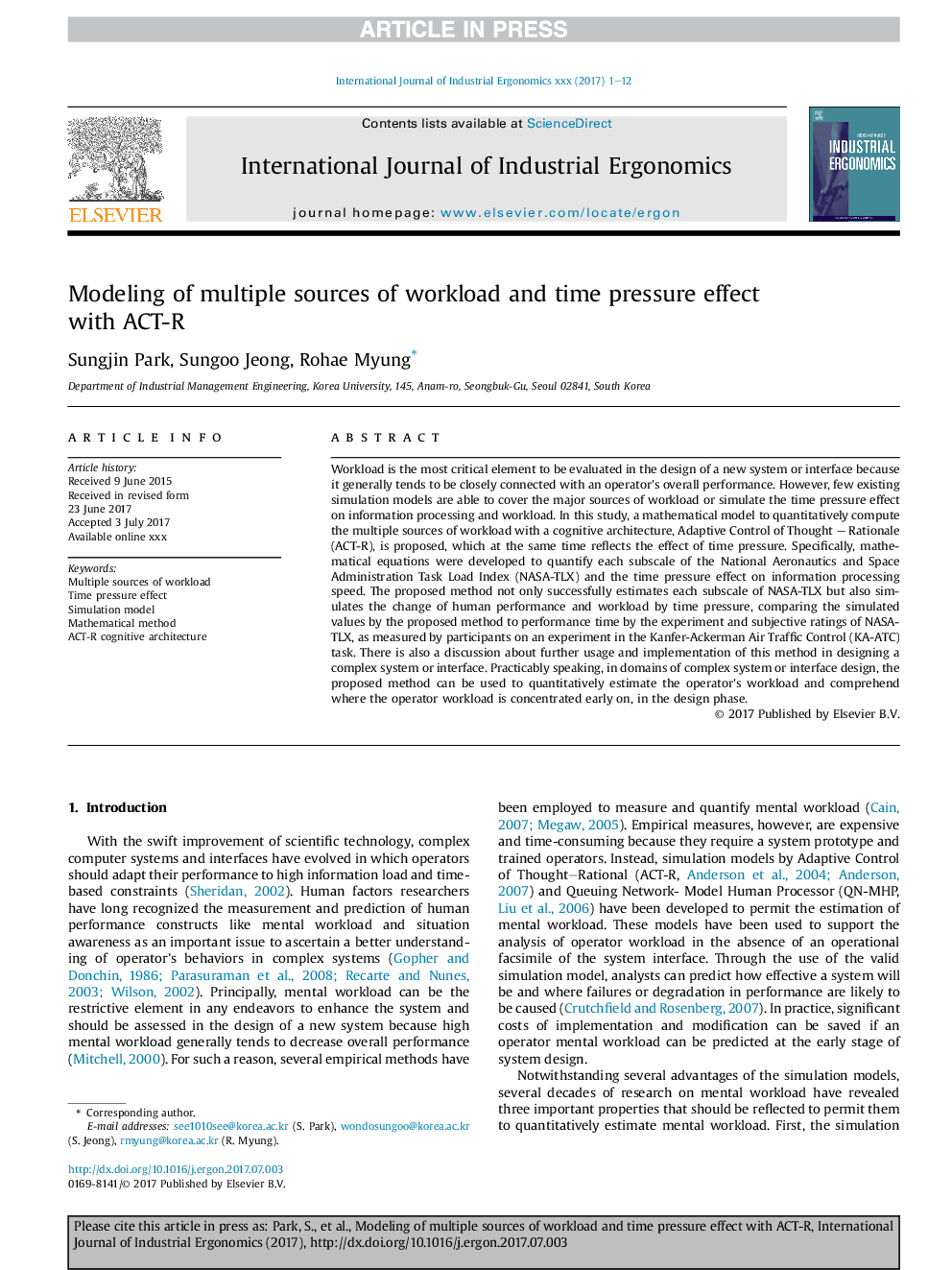| Article ID | Journal | Published Year | Pages | File Type |
|---|---|---|---|---|
| 7530470 | International Journal of Industrial Ergonomics | 2018 | 12 Pages |
Abstract
Workload is the most critical element to be evaluated in the design of a new system or interface because it generally tends to be closely connected with an operator's overall performance. However, few existing simulation models are able to cover the major sources of workload or simulate the time pressure effect on information processing and workload. In this study, a mathematical model to quantitatively compute the multiple sources of workload with a cognitive architecture, Adaptive Control of Thought - Rationale (ACT-R), is proposed, which at the same time reflects the effect of time pressure. Specifically, mathematical equations were developed to quantify each subscale of the National Aeronautics and Space Administration Task Load Index (NASA-TLX) and the time pressure effect on information processing speed. The proposed method not only successfully estimates each subscale of NASA-TLX but also simulates the change of human performance and workload by time pressure, comparing the simulated values by the proposed method to performance time by the experiment and subjective ratings of NASA-TLX, as measured by participants on an experiment in the Kanfer-Ackerman Air Traffic Control (KA-ATC) task. There is also a discussion about further usage and implementation of this method in designing a complex system or interface. Practicably speaking, in domains of complex system or interface design, the proposed method can be used to quantitatively estimate the operator's workload and comprehend where the operator workload is concentrated early on, in the design phase.
Keywords
Related Topics
Physical Sciences and Engineering
Engineering
Industrial and Manufacturing Engineering
Authors
Sungjin Park, Sungoo Jeong, Rohae Myung,
